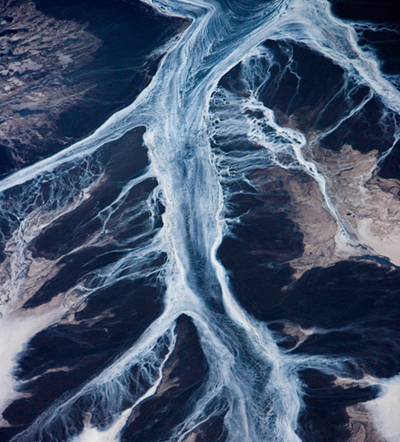
The Day After Tomorrow by J Henry Fair, published by powerHouse Books (Click image to enlarge)

He’s been to many of the locales across the continent probably found toward the very end of most travelers’ sight-seeing lists: the deforested lands of Kenogami in Ontario, Canada; the mountaintops laid bare by coal miners in Appalachia; and the beds of petroleum coke in Texas City, Texas. J Henry Fair has journeyed to each of them so that those less inclined to follow this itinerary can simply view the pages of his book,
The Day After Tomorrow: Images of Our Earth in Crisis. To be published by powerHouse Books in January 2011, it assembles 80 vivid color photographs from Fair’s 10-year-long and still ongoing project, “Industrial Scars,” which examines the repercussions of modern lifestyles on the natural landscape. Essays are interspersed throughout by prominent writers and environmentalists, including NASA’s James Hansen and Tensie Whelan of the Rainforest Alliance. For Fair, artwork is a call to action. Planet spoke to him about the power, the ugliness, and, yes, the beauty of his images.
Artists often resist giving the impression that there is any political motivation behind their work, but you are completely forthright. How did you decide to do away with any pretense about what you were hoping to communicate?
Well, why be pretentious? The first thing that I am asked when I show someone these pictures is ‘Oh my god, what is it?’ And actually the pictures came before the knowledge of what is it. I went looking for it, but I didn’t know what I’d found.
(more…)

In Between by Guy Bourdin Published by Steidl Dangin (Click to enlarge)

Guy Bourdin, the original bad boy of fashion photography, came to fame in 1955 when on the pages of the French Vogue he juxtaposed the prim
haute couture dresses against butchered cow heads. At the time this was far more audacious than the current vapid soft porn of Terry Richardson and Olivier Zahm. Bourdin went on to become one of the most celebrated fashion photographers in the world. The new book, In Between (
Steidl, $58), offers an engaging retrospective of his work.
The 272 page tome offers 400 carefully selected photographs that span Bourdin’s
oeuvre from 1955 to 1989. The theme of the book is centered on the photographer’s signature achievement – the use of the magazine spread that allowed him to create large, striking images. There are quite a few impressive photos in the book, mostly those of his late work. Curiously enough, the book is not organized in chronological order, which would allow the viewer to see how Bourdin’s work became more daring with time. The most remarkable images are those that bear the photographer’s trademark fascination with red color used in makeup. The red of the lipstick and the nail polish is wooingly deep and the starkness of the photographs is arresting.
Bourdin was most successful where his images were utterly artificial and staged. The more idyllic photos that use nature or children fade in comparison with the gloss and pomp of his obviously theatrical work. Fashion, after all, is theater and Bourdin had a talent for providing the stage.
(more…)
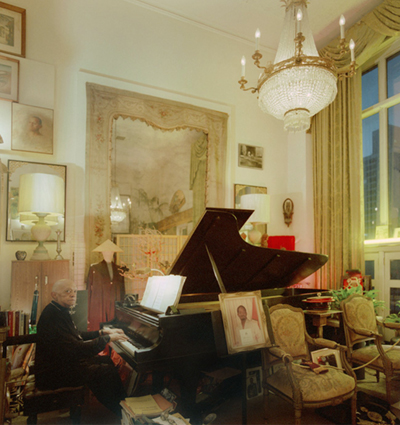
Donald Shirley By Josef Birdman Astor

From my regular column in
AnOther magazine.
New York photographer
Josef Birdman Astor is known among his peers as a “photographer’s photographer”. His work is revered for its technical mastery, ultimately made invisible by a beautiful use of light, shape, and concept. With the premiere last week of his first film – a documentary titled
Lost Bohemia – he is now, too, an artist’s artist. For years, Astor was a resident of the Carnegie Hall Artist Studios, inhabiting one of only a handful of skylight residences atop the legendary music hall (160 studios were commissioned by Andrew Carnegie shortly after the hall was built to help foster the arts in America and New York City). For over 100 years, they have given innumerable artists and students an opportunity live, explore, study, and create – and they added immeasurably to the cultural heritage of the city in which they existed. Throughout the 20th century, some of America’s most important artists either lived, worked, or studied in the studios: Mark Twain, Marlon Brando, Isadora Duncan, Grace Kelly, Leonard Bernstein, Martha Graham, George Balanchine, James Dean, and from the 80s onward a number of well-known contemporary actors studied there including Michael Douglas, Denzel Washington, Mira Sorvino, and John Turturro. Now the two towers are being gutted and many 19th century staircases, skylights, and other architectural jewels will be destroyed to make way for new corporate offices, music classrooms, and a private rooftop terrace for trustees and donors of the Carnegie Hall Corporation.
(more…)
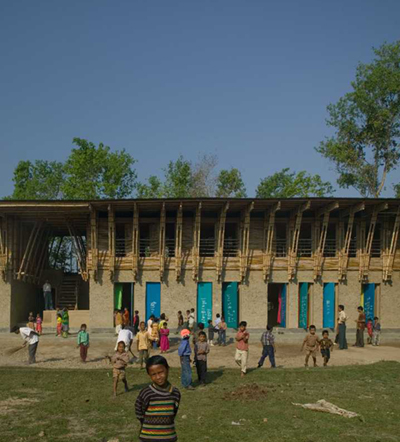
METI – Handmade School. Rudrapur, Bangladesh. 2004-06. By Anna Heringer and Eike Roswag. Image: Kurt Hörbst (Click to enlarge)

Over the last eight decades the architecture department at the Museum of Modern Art made its reputation by promoting avant-garde European and American work, mounting exhibits that defined and championed movements like the International Style, Postmodernism, and Deconstructivism. So MoMA’s new architecture exhibit “Small Scale, Big Change,” which focuses on modestly scaled, community-centered projects around the world, marks a dramatic shift in their mission.
It also serves as a potent call to arms. Architects everywhere today are challenged by economic instability and environmental concerns and, at the tail end of modernism, searching for a meaningful, unified language with which to build. The projects at MoMA suggest that the solution isn’t a new set of forms, but a new way to conceive and orchestrate building and infrastructure projects.
The eleven projects on display are truly global, and include works in Africa, South America, South Asia, and the Middle East. None was designed by a “starchitect,” and all were implemented in close collaboration with civic and community groups. Most significantly, each project grew out of real practical and social needs. One of the most powerful designs in the show is an American house prototype that costs only twenty thousand dollars. Two other projects, a primary school in Bangladesh and a linear park for Rio de Janeiro, were developed in direct response to community requests.
(more…)
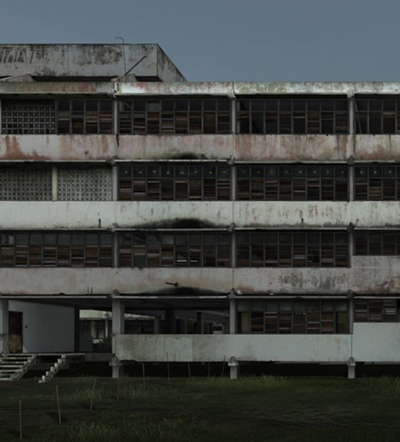
John Gerrard Cuban School (Community, 5th of October) 2010 Courtesy the artist and Simon Preston, New York (Click to enlarge)

Throughout his career, Vienna-based artist John Gerrard has continually explored the relationship between structures and their environments by charting the melancholic demise of our mechanical investments. His current exhibition, Cuban School, on view at NYC’s Simon Preston Gallery, is no exception; working from extensive photographs and topographical satellite data, Gerrard has re-constructed a simulated portrait of a school in Havana, Cuba, which we observe through the virtual lens of an unflinching 360-degree camera’s orbit. Steadily circling the structure that sits heavy, like a dinosaur’s skeleton, amidst vacant agricultural expanses, the projection is self-generating, continuously adjusting itself to engage with its viewers’ temporal reality. As the moments of a day piece themselves together — as the morning light softens, the afternoon light lengthens, as winter days grow shorter and summer days languish — so does Gerrard’s virtual world render itself: the sun moves appropriately, the dusk outside the gallery is mirrored and re-articulated in the dusk which settles like dust around the school. His footage is a veritable open system with an infinite duration, a post-cinematic performance of the passage of a year as it inflects this abandoned relic of a time gone-by.
(more…)

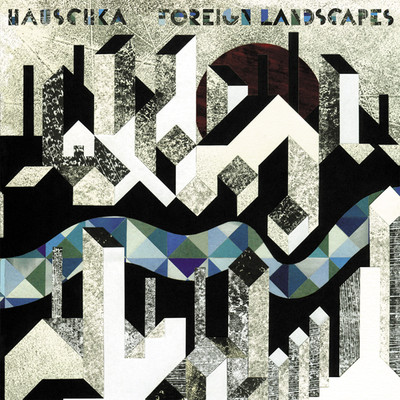
FatCat Records

“Electronic avant-garde” is what Germany’s Hauschka is lazily dubbed. This may have been an appropriate tag for his first solo album, 2007’s
Room To Expand, but on his second, 2008’s
Ferndorf, he stuck strictly to his piano, pushing his music into classical territory. With the accompaniment of orchestral elements, the pianist/composer’s latest full-length,
Foreign Landscapes, falls squarely into the classical world. “Madeira” relies heavily on a low, thrumming cello and high-strung violins, leaving the piano out of the mix entirely. “Early In The Park” brings the piano back to the center, giving the tune a melancholy air. “Kamogawa” is a blend of the two, in which the piano-driven melodies are intercut with sharp stabs of violins and a muted flute. Far more than Hauschka’s instrument, the piano, it is these powerful strings and emotive winds — provided by San Francisco’s Magik Magik Orchestra — that define
Landscapes. In fact, Hauschka’s cool trick of using what is not much more than trash (i.e. bottle tops, felt wedges, foil, tape) to modify the sounds of his piano doesn’t figure largely into the urgent and driving tone of the album.
After the jump, check out a video of Hauschka in performance, courtesy of BeatCast. Buy this at
Other Music or
iTunes.
(more…)

Final Tiaõ photographic print entitled Marat/Sebastiao–Pictures of Garbage Photograph by Vik Muniz, courtesy of Vik Muniz Studio

Waste Land is a powerful new documentary that follows Brazilian-born artist Vik Muniz to Jardim Gramacho, the world’s largest landfill, located on the outskirts of Rio de Janeiro, to photograph a spirited group of ‘catadores’, pickers of recyclable materials. The catadores eke out a living in the dump, sifting through endless mountains of ripe garbage, removing roughly 200 tons of recyclables a day. Unlikely stewards of the environment, the catadores reside on the fringes of society — in rubbish-strewn slums, ostracized, and misunderstood. Having built a successful art career using unconventional materials, Muniz arrived in Gramacho hoping to “change the lives of a group of people with the same material that they deal with everyday.” The resulting portraits, reconceived on a grand scale by the catadores themselves using hand-picked recyclables, take on a trajectory all their own, reawakening the lives of everyone involved in the collaboration. Directed by Lucy Walker, (Countdown to Zero, Devil’s Playground) and filmed over three years, Waste Land has been lauded with film festival awards, elicited standing ovations from Mexico City to Tokyo, and, along with Muniz’s photographs, helped raise thousands of dollars for the Association of Pickers of Jardim Gramacho (ACAMJG). A film of deep contrasts, Walker imbues the catadores with a sense of dignity and humor, bringing their bleak lives into sharp focus despite the sometimes overwhelming despair of the landfill. PLANET spoke with Vik Muniz and Lucy Walker about junk, the human factor, and the transformative power of art.
(more…)
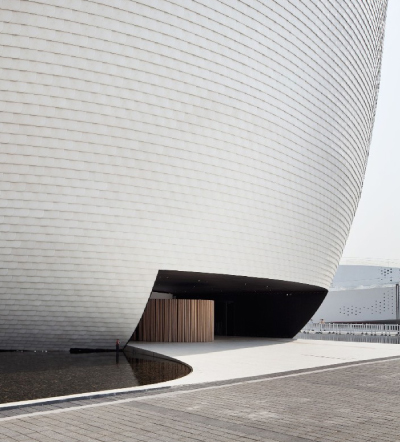
Finland's Shanghai Expo Pavilion, “Kirnu,” by JKMM (Finland), 2010. Photo: Derryck Menere. (Click to enlarge)

When the San Francisco Museum of Modern Art chose the Oslo-based architecture office Snohetta to design its addition this summer, it heralded the arrival of a great new wave of Nordic design. Not since the 1960’s, when Americans were lounging around in Verner Panton chairs and Marimekko dresses, has the voice of designers in Denmark, Finland, Iceland, Norway and Sweden been so prominent internationally.
An exhibit at Scandinavia House in New York, “Nordic Models + Common Ground: Art and Design Unfolded,” presents a small, intriguing selection of art and design projects. The unique character of modern Nordic design, a formal purity enlivened by gentle eccentricities, has often been attributed to the region’s isolating, rugged geography. Yet even in our present age of global connectedness these qualities remain evident. Each project on display combines forms and materials in unlikely ways. Yet even the strangest of them — like a rap song that outlines urban planning strategies, and light fixtures crafted from the dried skins of codfish — have a palpable warmth: they aren’t ironic.
In addition, each work on display has a startling formal simplicity, which owes less to a minimalist aesthetic than to the designer’s clarity in concept and economy in execution. This is especially remarkable in the architecture projects. A basic triangular tent module is arrayed to shape an exhibition pavilion. Another, spherical pavilion is clad entirely with flat, scale-like, composite wood shingles.
(more…)
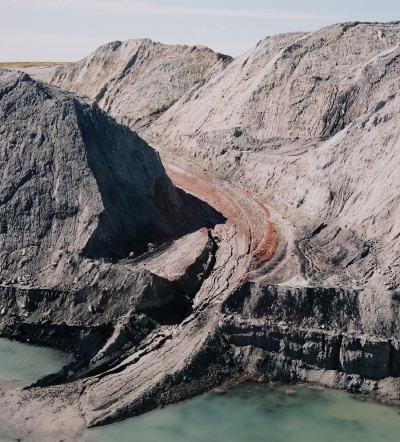
Mine spoil piles and intersected water table, 1984 (Click to enlarge)

Last April, the Deepwater Horizon tragedy showed us how crude oil can devastate an environment. But it’s not just explosions or spills that have hazardous effects on our fragile ecosystem. Sometimes, damage can be continuous and insidious—like it is at Colstrip, an enormous coal mine in southeastern Montana. Colstrip has the distinction of being one of the nation’s dirtiest, most polluting plants: each hour, it belches more than 400 pounds of sulfuric acid into the air, and its waste also filters down to the local water table, spreading toxins far and wide.
How do you convey this kind of unremitting, non-sensational damage? David T. Hanson took up the challenge, spending three years documenting the Colstrip plant and its surrounding town. His beautiful, melancholy images, which are now published in Colstrip, Montana (D.A.P.), were actually shot in the 1980s, but given our growing concerns about skyrocketing energy costs, peak oil, and environmental decay, they seem even more timely now.
The images are unsettling for several reasons. Hanson has a keen eye for color and composition, and there’s a classical beauty to most of the photographs. Shot from above, even deep gashes in the landscape and irridescent green waste ponds can look attractive, like a Rothko or Diebenkorn canvas. Even in devastation, there is beauty: anyone who doubts that need only look at Joel Meyerowitz’s photographs of Ground Zero or Robert Polidori’s studies of empty rooms after Katrina.
(more…)
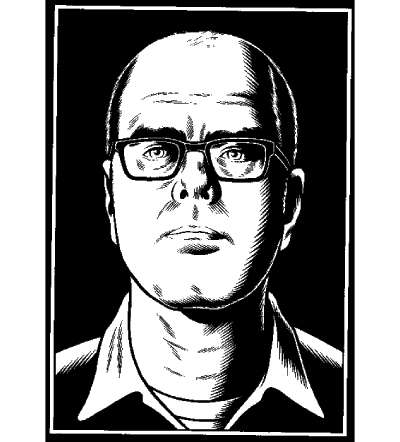
Illustration and Images courtesy of Charles Burns

Charles Burns has been a luminary of the alternative comics world since the early ’80s, when his work was published in the underground comics anthology
RAW, edited by Art Spiegelman and Françoise Mouly. Most famous for
Black Hole — published between 1995 and 2005, the series chronicles the misfortunes of a group of Seattle teenagers who contract a horrifying sexually transmitted disease which leads to gruesome disfigurations — Burns is also the in-house illustrator for
The Believer and has done advertising work for commercial products such as Altoids and Coca-Cola.
His latest work,
X’ed Out (Pantheon Books, $19.95), will be released on October 19th as the first installment in a new trilogy. Printed in brilliant full color, the book follows a young man named Doug as he drifts in and out of sleep-like states, flashbacks and what seem to be full on, drug-induced hallucinations.
PLANET sat down with Charles Burns in his Philadelphia home to talk about
X’ed Out, his so-deemed “genius for the grotesque” and why he doesn’t write teenage vampire romances.
(more…)





 Facebook
Facebook Permalink
Permalink Digg
Digg Reddit
Reddit LinkedIn
LinkedIn StumbleUpon
StumbleUpon Tumblr
Tumblr












